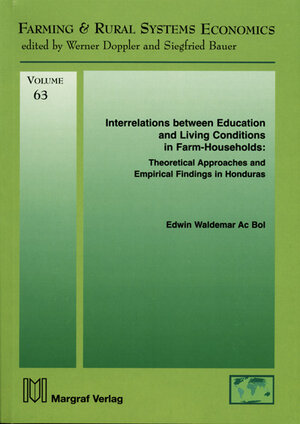
×
![Buchcover ISBN 9783823614371]()
Interrelations between Education and Living Conditions in Farm-Households:
Theoretical Approaches and Empirical Findings in Honduras
von Edwin Waldemar Ac BolThere are high expectations that education can help to reduce poverty in rural areas. This book investigates the inter relation of education and the living conditions of farm-households. On one hand the access to factors of production (land, labor, capital, and education) have an impact on the total household income. On the other hand total household income determines the access to factors of production. The previous relation is influenced by regional conditions. Regional conditions that reduce transaction cost (asphalted roads, electricity, health services) and allow working in the complete chain of value (field production, processing and commercialization) have a strong positive impact on the production capacity and income of farm-households. Regional conditions are in hands of regional planners, policy makers, researchers, and personnel in charge of implementation. The education of these actors determines the efficacy of the policies. Higher education level is found to be more related to higher household income at regional and household level. Improvements in the higher education system are required as precondition to improve primary and secondary education. In relation to methodologies “Man Power planning” is a methodology that can be used to identify the needs of the country to achieve social and economic goals, later methodologies that identify relation among variables can be used to define policy interventions. Finally cost-benefit analysis can be used to identify options to reduce cost at the moment of educating the critical human resources needed.


